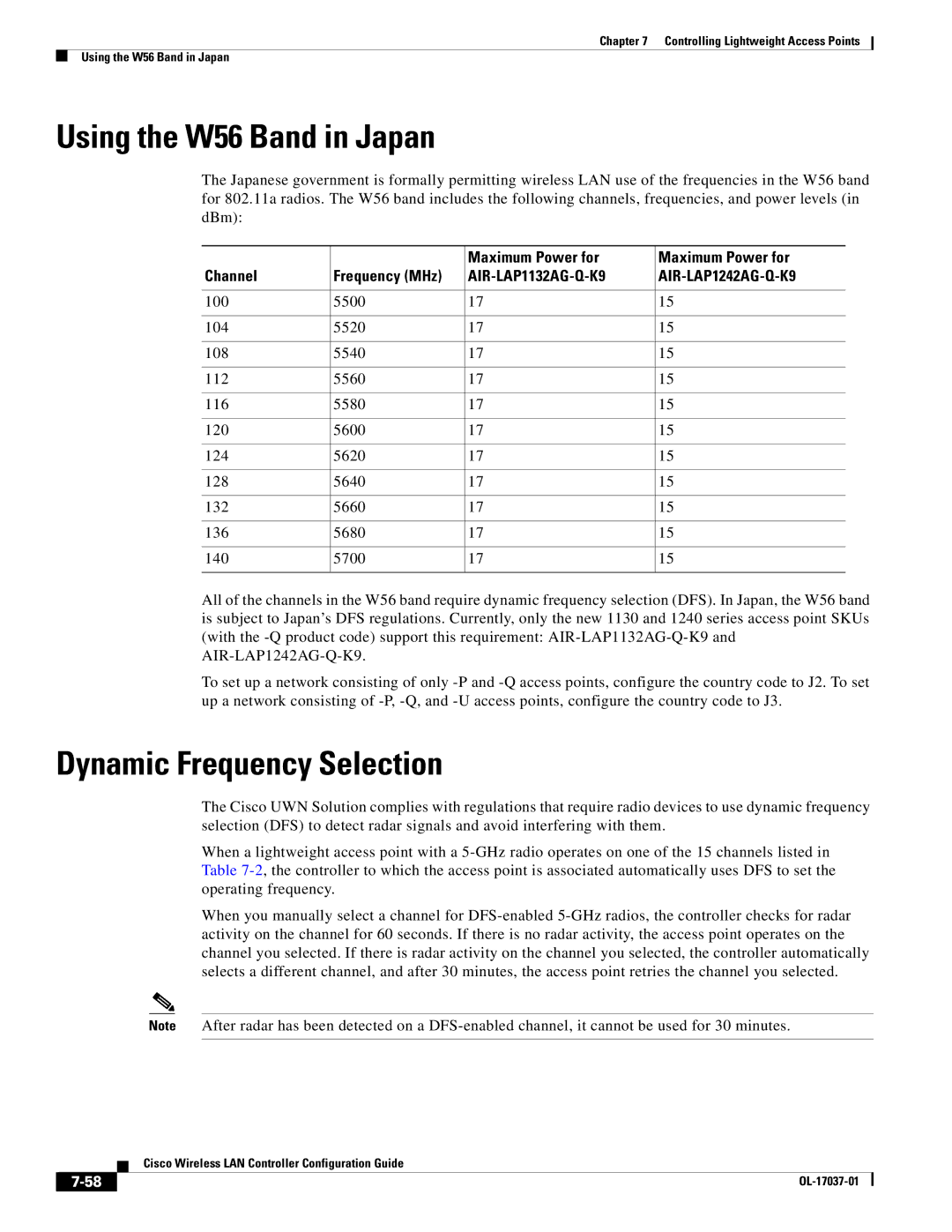
Chapter 7 Controlling Lightweight Access Points
Using the W56 Band in Japan
Using the W56 Band in Japan
The Japanese government is formally permitting wireless LAN use of the frequencies in the W56 band for 802.11a radios. The W56 band includes the following channels, frequencies, and power levels (in dBm):
|
| Maximum Power for | Maximum Power for |
Channel | Frequency (MHz) |
|
|
|
|
|
|
100 | 5500 | 17 | 15 |
|
|
|
|
104 | 5520 | 17 | 15 |
|
|
|
|
108 | 5540 | 17 | 15 |
|
|
|
|
112 | 5560 | 17 | 15 |
|
|
|
|
116 | 5580 | 17 | 15 |
|
|
|
|
120 | 5600 | 17 | 15 |
|
|
|
|
124 | 5620 | 17 | 15 |
|
|
|
|
128 | 5640 | 17 | 15 |
|
|
|
|
132 | 5660 | 17 | 15 |
|
|
|
|
136 | 5680 | 17 | 15 |
|
|
|
|
140 | 5700 | 17 | 15 |
|
|
|
|
All of the channels in the W56 band require dynamic frequency selection (DFS). In Japan, the W56 band is subject to Japan’s DFS regulations. Currently, only the new 1130 and 1240 series access point SKUs (with the
To set up a network consisting of only
Dynamic Frequency Selection
The Cisco UWN Solution complies with regulations that require radio devices to use dynamic frequency selection (DFS) to detect radar signals and avoid interfering with them.
When a lightweight access point with a
When you manually select a channel for
Note After radar has been detected on a
| Cisco Wireless LAN Controller Configuration Guide |
